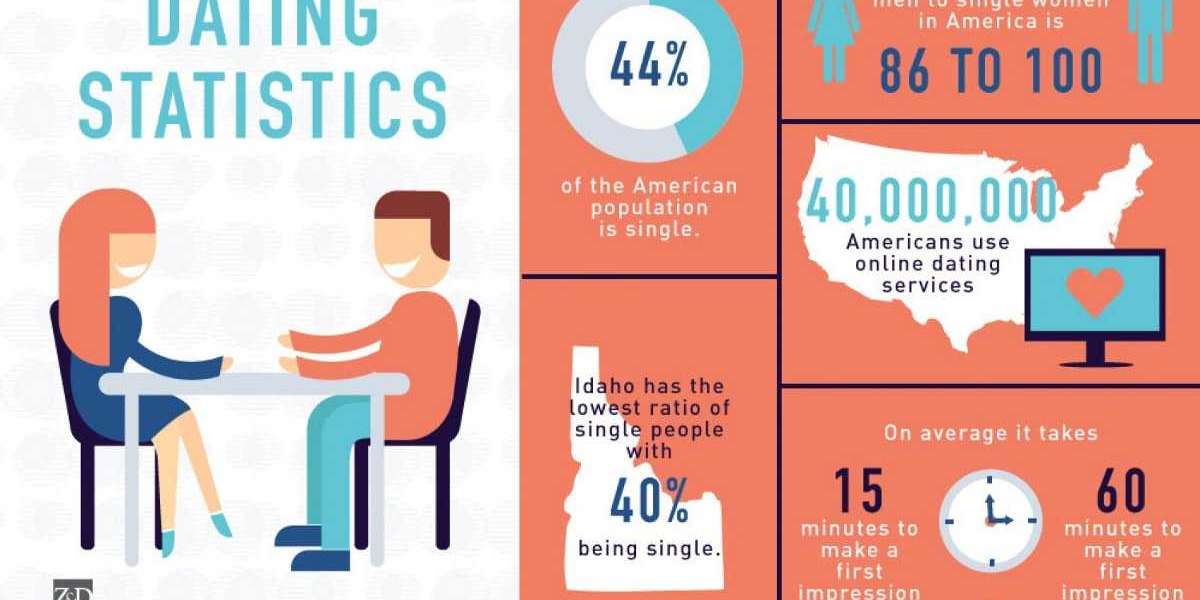Online dating has become a mainstream way to meet new people and establish romantic connections, with the potential to change the way people connect and fall in love. As the use of online dating sites and apps has continued to grow, so too have the various statistics and trends that have emerged. In this article, we'll take a closer look at some of the most interesting and noteworthy online dating statistics and trends, and what they mean for the future of this industry.
One of the most notable trends in online dating is the increasing prevalence of mobile apps. According to data from the Pew Research Center, over half of online daters have used a dating app on their phone, with the majority of users accessing these apps through the app store or Google Play. This shift towards mobile has been driven in part by the convenience and ease of use of these apps, as well as the increasing amount of time that people spend on their phones.
Another trend in online dating is the rise of niche dating sites and apps. While some of the more popular dating sites and apps are geared towards a general audience, there are now a wide variety of specialized platforms catering to specific groups or interests. These niche sites and apps include those for people of a particular religion, profession, hobby, or sexual orientation, as well as those for people seeking more casual or long-term relationships.
One of the key statistics to consider when it comes to online dating is the success rate of these platforms. While there is no definitive data on the number of people who find lasting relationships through online dating, there are some indications that it can be quite effective. For example, a study conducted by the University of Chicago found that couples who met online were more likely to be satisfied with their relationships and less likely to get divorced than those who met offline.
Another important online dating trend to consider is the increasing popularity of video dating. With the widespread availability of video conferencing tools like Zoom and Skype, it has become easier for people to connect with one another through video calls, even if they are physically far apart. This trend has been particularly pronounced during the COVID-19 pandemic, as many people have turned to video dating as a way to safely connect with potential partners.
Some Statistics/Studies of note:
According to a survey conducted by Match.com, over 40 million people in the United States have used an online dating site or app. This represents a significant portion of the single population in the country, and highlights the growing acceptance and popularity of online dating.
Another survey, conducted by the Pew Research Center, found that among adults aged 18-29, almost a third (32%) have used a dating app or site. This is significantly higher than the overall average, and suggests that younger people are particularly open to the idea of using online platforms to meet potential partners.
One of the most common concerns about online dating is the issue of safety. However, data from the National Crime Agency in the United Kingdom suggests that the risks associated with online dating are relatively low. According to their data, just 1.3% of reported sexual offenses in the UK in 2019 were linked to online dating.
One interesting trend in online dating is the rise of "slow dating" or "conscious swiping." This approach involves taking a more measured and intentional approach to online dating, rather than swiping through a seemingly endless array of profiles. According to data from Hinge, a dating app that promotes slow dating, users who engage in this approach are more likely to form meaningful connections and go on more dates.
Data from the Statistic Brain Research Institute suggests that the average amount of time that people spend on a dating app is around 35 minutes per day. This suggests that while online dating may not be the primary focus for many users, it is still a significant part of their daily routines.
According to data from the Pew Research Center, around 20% of people in committed relationships met their partner online, while 17% met their partner through a mutual friend. This suggests that while online dating is a popular way to meet new people, it is not the only way that people form romantic connections.
A survey conducted by the National Academy of Sciences found that couples who met online were more likely to be of different races or ethnicities compared to those who met offline. This suggests that online dating may be helping to promote greater racial and cultural diversity in relationships.
A study conducted by researchers at Stanford University found that couples who met online were more likely to have a higher level of education compared to those who met offline. This may be because online dating platforms tend to attract users who are more educated and career-focused.
According to data from the Statistic Brain Research Institute, the average cost of a single date for those who meet online is around $80. This is significantly lower than the average cost of a date for those who meet offline, which is around $115.
Finally, a survey conducted by the Kinsey Institute found that around 20% of people who use online dating have had a "friends with benefits" arrangement, while 15% have had a one-night stand. This suggests that while online dating can be used to find long-term relationships, it is also a way for people to explore more casual or short-term connections.
Interesting eh?
Overall, these statistics highlight the increasing prevalence and acceptance of online dating, as well as some of the key trends and challenges associated with this industry.
As online dating continues to evolve, it is likely that we will see even more statistics and trends emerge. However, one thing is clear: online dating has become a significant part of the way that people meet and form relationships, and it is likely to continue to play a major role in the dating landscape for the foreseeable future.








